Marcus and Cindy Larson have assembled the perfect rig to chase their truck camping dreams; no bathroom, no tanks, no complications. Their message, drone photography, and destination tips are a must for anyone who wants to camp off-road and off-grid.
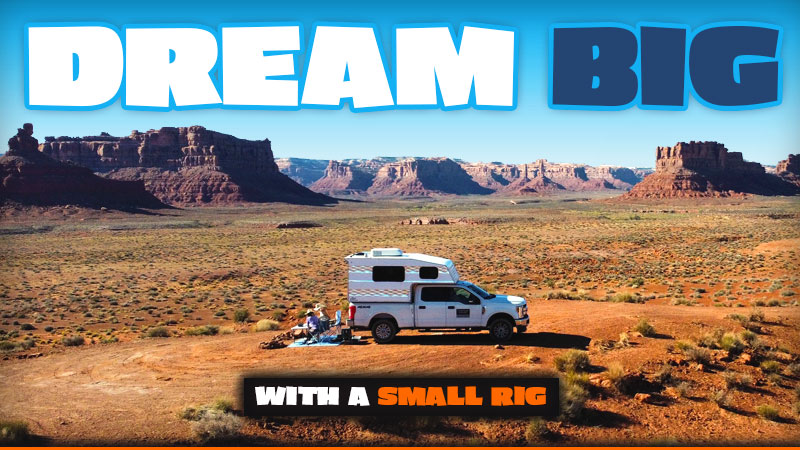
We often tout the, “go anywhere, camp anywhere, tow anything” capabilities of truck camping as the top three reasons why our community loves truck camping. However, Marcus and Cindy Larson have revealed a fourth and possibly even more important reason than any of those three.
As they put it, truck camper rigs can be, “tailored to fit your dreams”. If there’s something you want to do involving travel, living accommodations, and a specific hobby or interest, chances are there’s a truck and camper combination to satisfy that requirement list.
For one truck camper owner, that’s a Class-5 truck (F-550/5500) with a storage bed, a multi-slide truck camper, and a car trailer with a 1965 Shelby Mustang GT500. They want to attend car shows and visit car museums across the American West. Does that sound like a dream for someone? Absolutely, heck yes!
For the next camper owner, that’s a Class 2 truck (half-ton) with a simple and light camper tricked-out for overland-style travel and remote off-grid camping. With a Nikon Z9 and Zeiss Milvus 21mm f/2.8 lens, they want to capture the beauty of spectacular places across the continent most of us only see in pictures. For this person, being there, their camera on their tripod during the magic hour, is the dream. And how!
If those examples sound specific, there’s a reason. Many times there is a very specific reason we assemble a specific truck and camper set up. Thank you to Marcus and Cindy for bringing this message back to the forefront. If only we could sum up this idea into two words and add it to our tagline. We’ll have to work on that.
As a huge bonus to Marcus and Cindy’s story, they share five recommended destinations, tips on how to find spectacular remote camping sites, and their trick to exploring the national parks without reservations. That last one is worth the read all by itself.
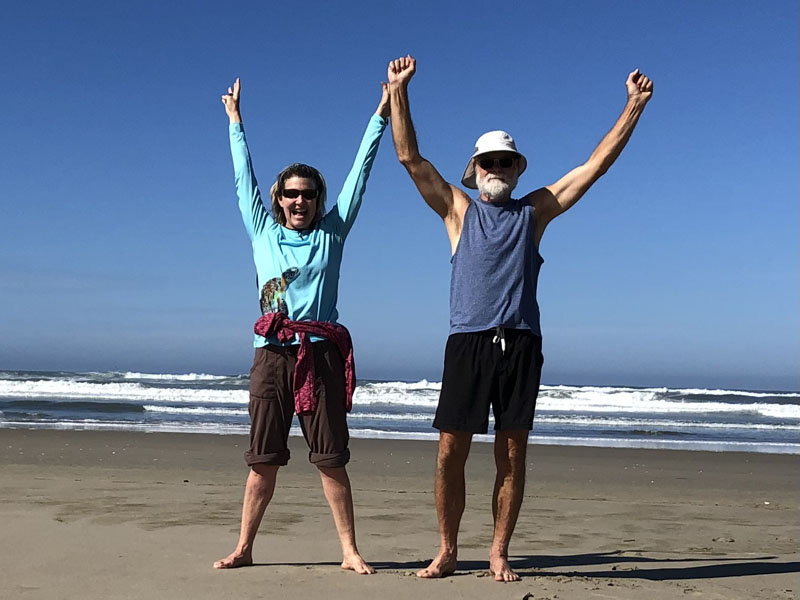
by Marcus and Cindy Larson
What makes truck camping so cool is how it can be tailored to fit your dreams. We know that the majority of truck camper owners would like more amenities than we have, but we specifically wanted something simple. There’s less to go wrong. After 30-years of tent camping, we feel like we now sleep in the Taj Mahal.
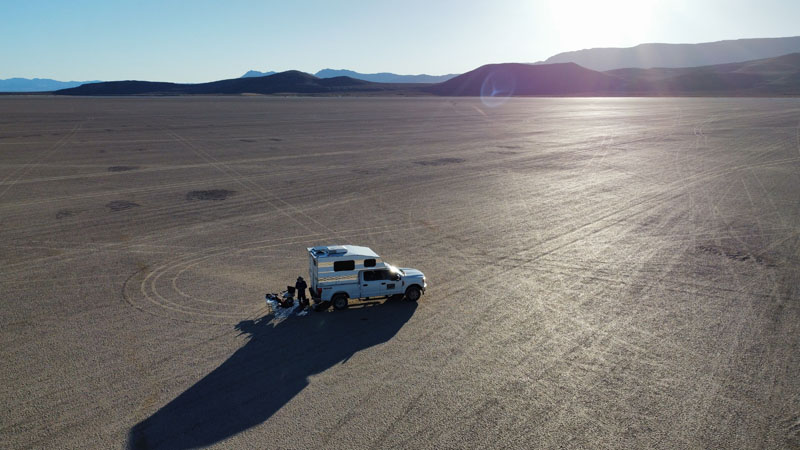
Above: Alvord Desert, Oregon
We went on a 60-day, 8,000-mile trip from Tennessee to Oregon and back. We went up through Iowa, the Dakotas, across Montana, Wyoming, Idaho, Oregon, northern California, and back through Nevada, Utah, Arizona, New Mexico, Texas, Oklahoma, Arkansas, and home. We love truck camping.
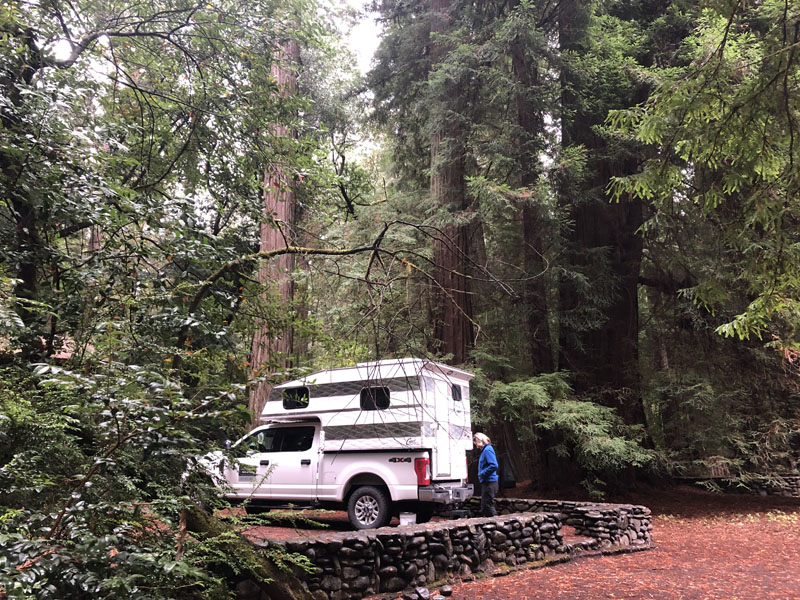
Above: Jedediah Smith Redwoods, California
What follows are some insights into how we extend our off-grid camping capabilities, modified our truck camper for off-road travel, and some recommended off-the-beaten-path campsites.
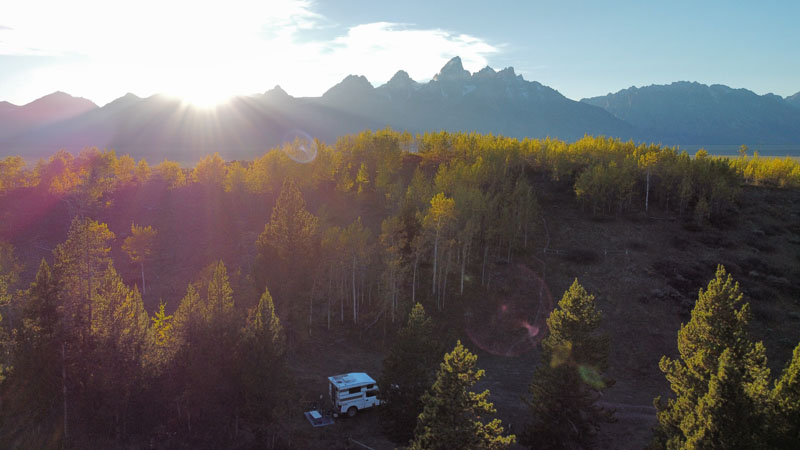
Above: Bridger Teton National Forest, Wyoming
We purchased a small and light Capri Camper to go onto our four-wheel drive Ford F-250. The resulting rig allows us to go off-road in national forests, BLM land, and wildlife refuges. We love to disperse camp near where we will be hiking. We love being off the beaten path. With our Capri Camper, we can stay off-grid for a long time.
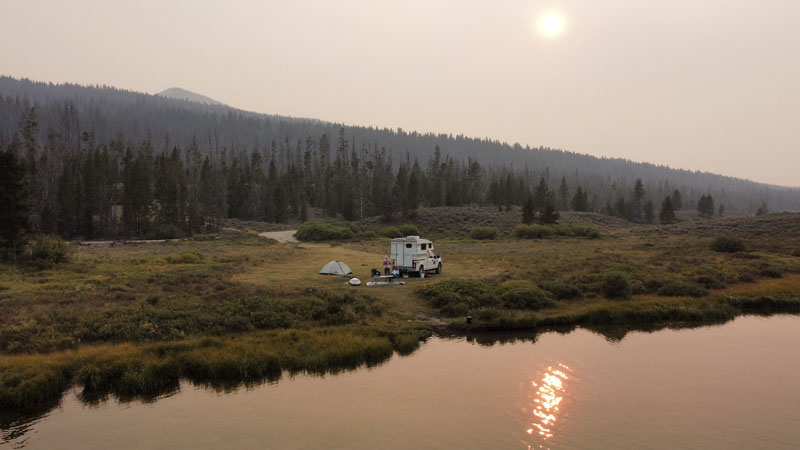
Above: Green River at Wind River Range, Wyoming
To make our extensive off-grid camping possible, we need to power our Nova Kool 12-volt compressor refrigerator and LED lights, plus the ability to recharge our phones and drone batteries. These electrical needs are handled by two deep cycle Interstate 100-amp hour batteries, one 175-watt Renogy solar panel, and a Renogy controller.
We cook on a portable multi-fuel camp stove which we almost exclusively use outside. When we use it inside, we are careful to properly ventilate.
The only water source we have in the camper is a hand pump sink. We generally carry six one-gallon jugs and one five-gallon container for back up. We also always carry chlorinating tablets for drinking water from streams.
If we are camping near a creek, we boil water for cooking. The gallon jugs can easily be refilled in parks, rest stops, etc. We also avoided any grey water tank so that there are no freezing issues in the winter.
We use a comfortable “cat hole” bucket system to avoid carrying waste. For those who haven’t backpacked, we dig an 8-inch hole, use the bathroom, and then cover it up.
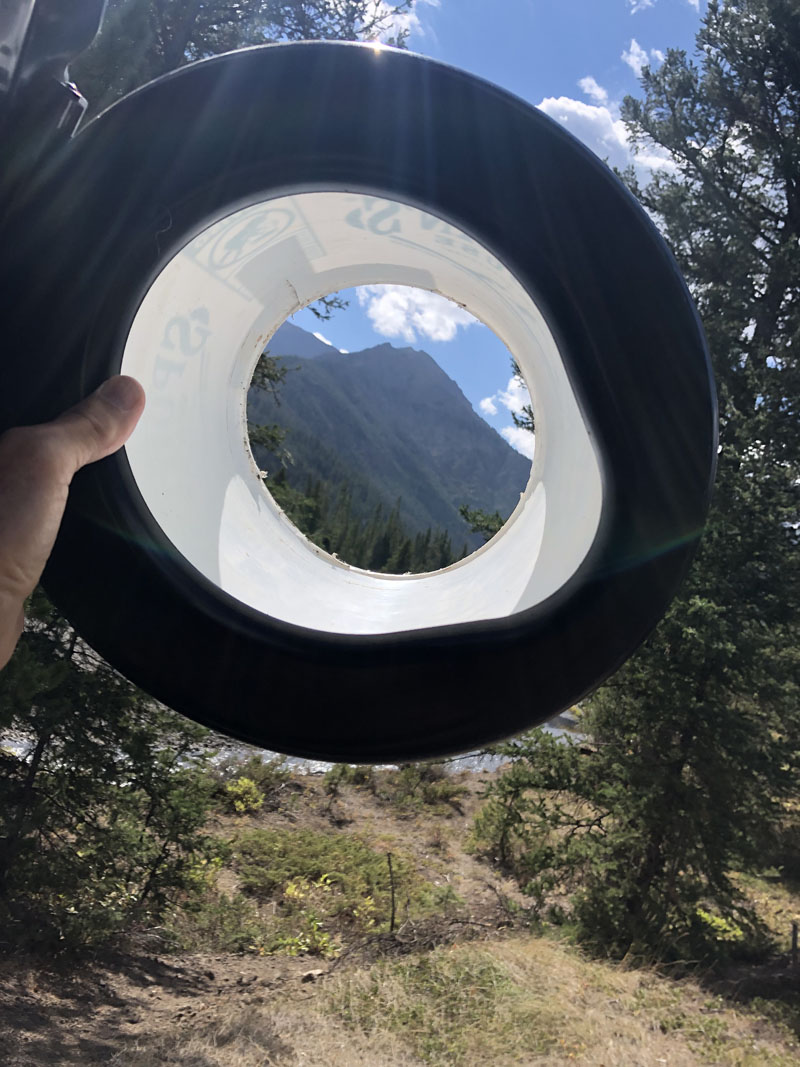
With truck camping, you can take it a step further by cutting the bottom out of a 5-gallon bucket, buying a seat that snaps on top, and placing the bucket over the cat hole for a comfortable toilet with a spectacular view. We take great pride in picking out the best view for our bucket.
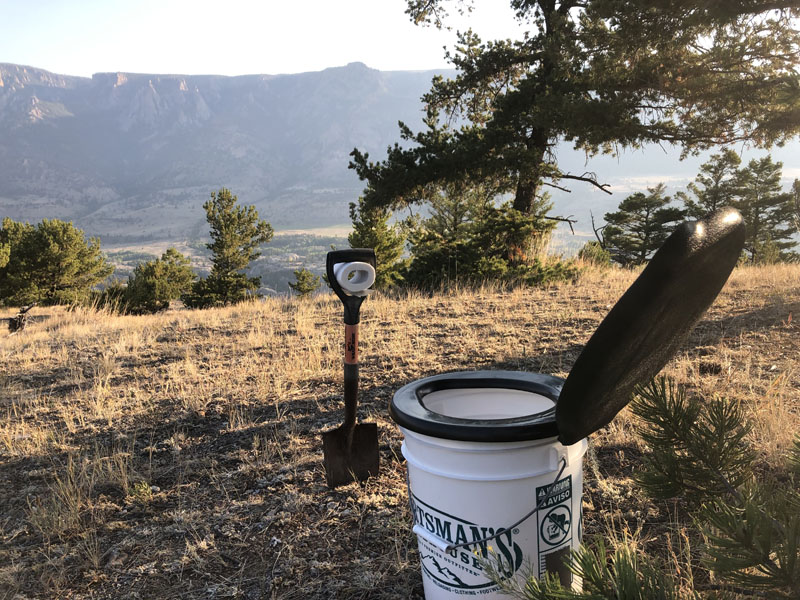
One thing that really gets our goat is finding a beautiful camp spot, and then finding a pile of toilet paper behind a tree. Bury your toilet paper or carry it out.
For showering, we have a battery-powered shower head to use outside. For heat, we installed a propane Dickinson 9000 fireplace. We did not want the noise, smell, or hassle of a generator. We have only used our air conditioner once in two years because we do most of our trips in the spring and fall.
We added two Torklift tie-downs to help with camper sway while off-road. We also use the four turnbuckles supplied by Capri that connect the camper to the truck bed.
A small Dewalt battery-powered chainsaw is brought along for low limbs or downed trees. Other recovery items we carry include a tow strap, battery-powered air compressor, and traction roll.
In the fall of 2021, we traveled across the Northwest with a focus on hiking the National Parks and dispersed camping in the adjoining national forest and BLM land.
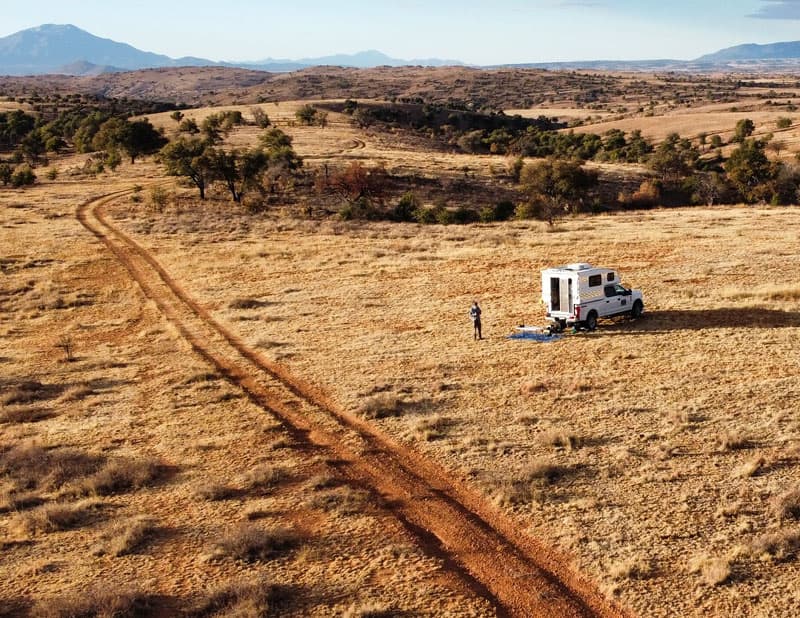
Above: Montezuma Canyon, Coronado National Forest, Arizona
We did not want to be tied down to certain dates, so we did not reserve any campgrounds in the national parks. We did find that it was not unusual after Labor Day to find campground spots open and stayed in some national park campgrounds if it made sense for our planned hikes.
Our advice with the popular national parks is to plan your hike in advance, avoid the visitor’s centers, and get to the trailheads before sunup to get a parking space.
After a few miles into the trail, you normally lose the crowds. We also found plenty of dispersed camping spots just outside of the popular national parks.
So far we have visited thirty national parks, camping in the national forest near the parks or on BLM land. Even though our route was designed around the national parks, we knew the discoveries along the route are always the most special.
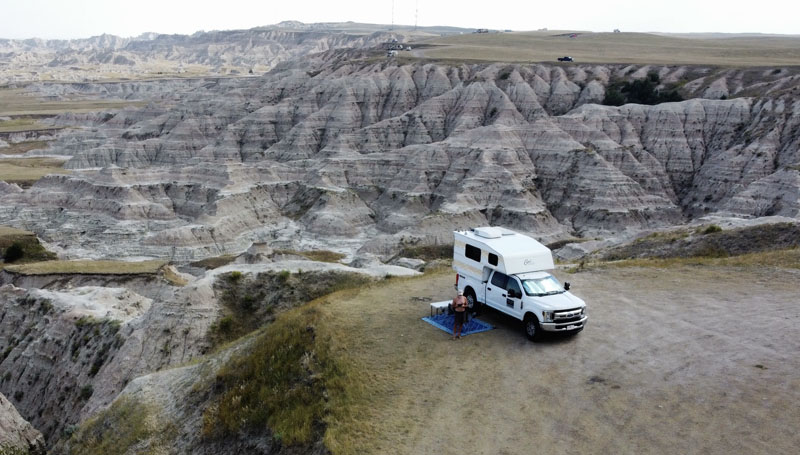 Above: The Wall at the Badlands, South Dakota
Above: The Wall at the Badlands, South Dakota
– The Wall at the Badlands, South Dakota
– Camping on Green River at the Wind River Range, Wyoming
– Bitterroot National Forest, southwest Montana and Idaho
– Absaroka Mountain Range, Montana
– Chief Joseph Scenic Highway camping in Sunlight Basin, Wyoming
– Alvord Desert, Oregon
– Camping among the Redwoods at Jedediah Smith State Park, California
– Navigating Forestry Roads and BLM Lands
We use the Benchmark State Road and Recreation Maps to find forestry roads and BLM land for camping.
We also use the app On X Off-Road that shows off-road trails for driving and rates them for difficulty. Of course, you have to remember to download the area you will be in while you have cell service. It also helps if you get lost or, as Davy Crocket said, “delayed”.
1. Alvord Desert Hot Springs, Oregon
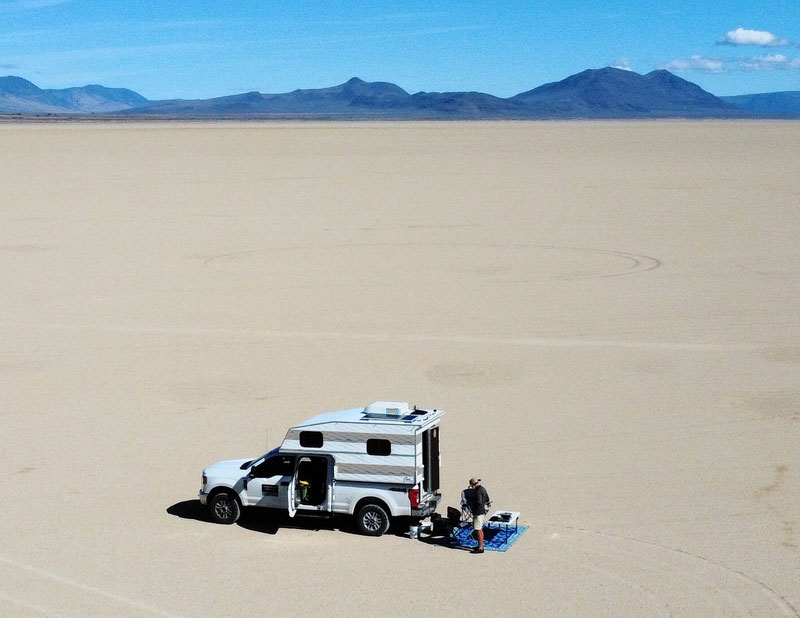
In Oregon, we traveled to Alvord Desert Hot Springs to camp on the salt flats and soaked for a couple of days. We watched the sun go down and up from the hot springs, and then camped on the desert playa.
Tip: If you haven’t been there before, Alvord Hot Springs is a funky, welcoming camp on the edge of the Alvord desert salt flats in the middle of nowhere. It is managed by Rick and Amy from Tennessee.

This area is known for hot springs, the darkest skies in the United States, and absolute silence if you choose to listen. Camping out on the desert Playa is otherworldly and surreal; like something out of the movie Mad Max. It’s like camping on an area of baked earth five miles wide and seven miles long.
2. Notom-Bullfrog Scenic Road, Utah
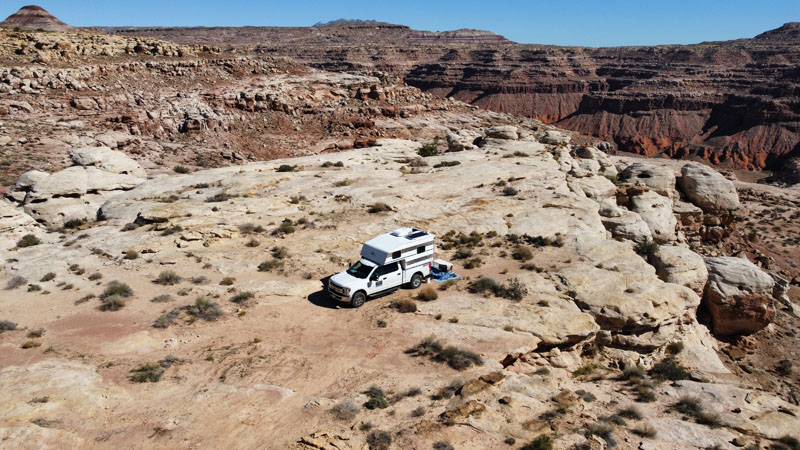
Notom-Bullfrog Scenic Road in Utah parallels Capitol Reef National Park. There are miles of dirt roads with great places to disperse camp.
Tip: Avoid the roads that end with “wash”.
Notom-Bullfrog Scenic Road ends at Lake Powell where a ferry could take you across before the water level became too low. Due to this change, we were detoured through the hairpin Moki Dugway dirt road.
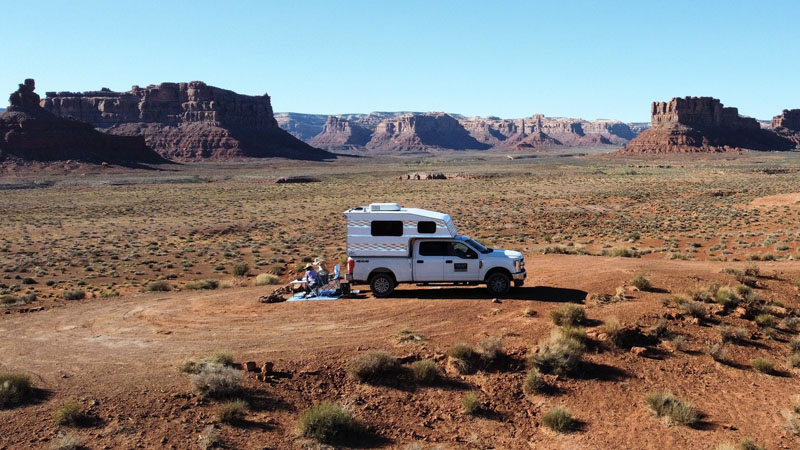
The Moki Dugway led us into the Valley of the Gods (pictured above) with some of Utah’s famous red rock formations and some of the coolest places to camp are found.
3. Pinacate National Preserve, Sonora, Mexico
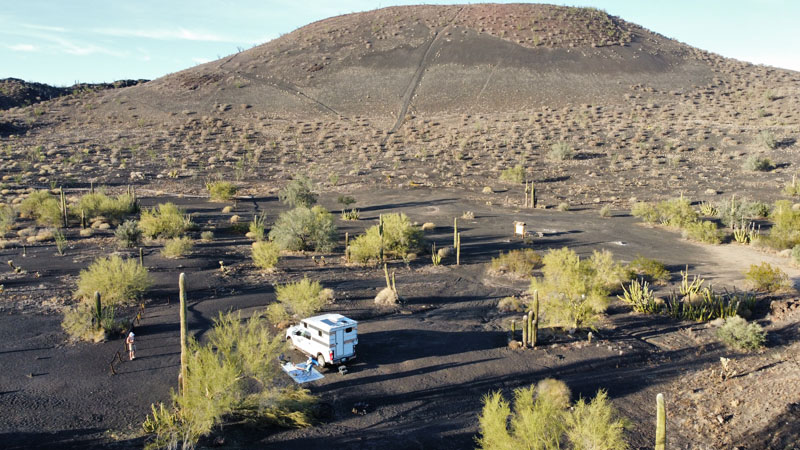
Pinacate National Preserve is a volcanic preserve in Sonora, Mexico. There are miles of pumice dirt road, over 400 volcanic cones and no one is there.
Tip: Watch your speed in Sonoyta, Mexico or you will make a donation to the city police to get your license back. We did. It’s an unsettling feeling to be, “robbed” by the police.
4. Big Bend Ranch State Park, Texas
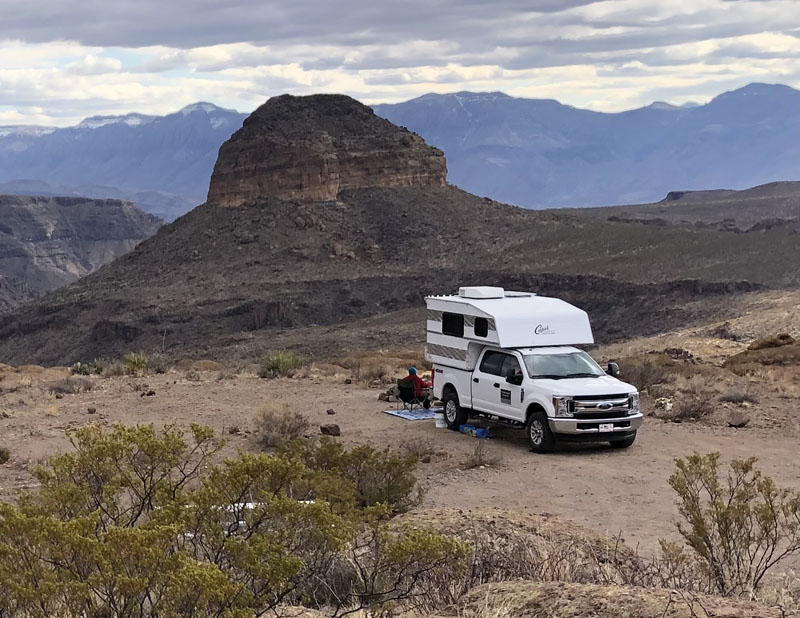
Big Bend Ranch State Park adjoins Big Bend National Park in southern Texas. There are miles and miles of dirt roads. Campsites must be reserved.
Tip: The Guale #2 campsite is spectacular.
You must have 4×4 high clearance to get there and it was two hours of tough four wheel drive travel to arrive at this site, but well worth it. Plan to stay for three days and hike into the desert canyon. You will have it to yourself.
5. Nevada
We also fell in love with Nevada purely for the enormous amount of public land to explore. Truck Camper Magazine has a “Bucket List” article about Nevada that’s a good place to start.
Our travels have instilled the fact that there are great people in the world of all races, religions, and political differences. The friendships we have made during our trips are as amazing as the scenery we have seen.
